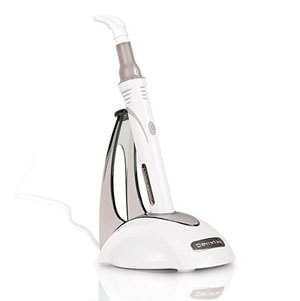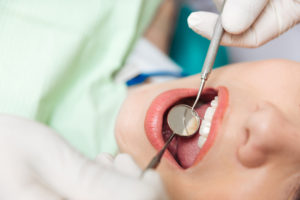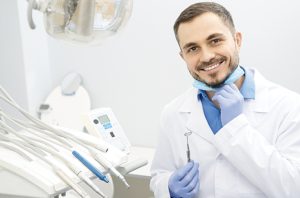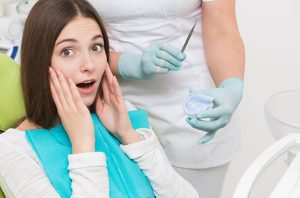Antimicrobials are, as they sound, strategies and tactics that address microbial threats that come primarily in the form of bacteria. Your mouth is swimming in bacteria, some good, but some very destructive that can lead to periodontal disease (gum disease.)
Left untreated, the bacteria can lead to plaque, which can build up, become infected and destroy the gums and tooth infrastructure. Symptoms of this type of disease include but are not limited to:
- Painful chewing and biting,
- Bleeding gums
- Loose teeth
In addition, gum disease is suspected to contribute to other diseases such as heart disease, which makes treating it early and avoiding it entirely good for more than just a few teeth or gums.
Treatment
Covered under the antimicrobial umbrella is any treatment that helps defeat microbes and the damage they can do in a patient’s mouth. Some of the first steps include root planning and scaling (cleaning and polishing,) which removes plaque.
Other procedures might include taking antibiotics, to stop the growth of bacterial colonies in your mouth and periodontal pockets. Antiseptic mouth rinses may also be prescribed to provide topical eradication of bacteria in conjunction with any antibiotic regimen.
Another approach is Local Antimicrobial Therapy. This can include using gels and mouth wash to control bacteria and stop its growth. Gel typically contains doxycycline or minocycline powder that works topically under your gum tissue. When this is done, the area is sealed in a dental pack to allow the gel to work.
In severe cases, surgery might be the only option. There almost always has to be existing damage that has already been done for surgery to be considered. When it is considered, after-care is intrusive and includes frequent checkups to ensure that bacteria has been stopped and that there is no resurgence in the disease.
The Role of Maintenance
In addition to treating disease, maintenance is as important. A periodontist will work with a patient to help them learn a maintenance routine, including brushing teeth at least twice a day, interdental cleaning and using antiseptic mouth rinse to kill bacteria. The best way to avoid having to see a periodontist is to maintain oral health from the outset, or at least from a patient’s teeth cleaning onward.
Additionally, following the advice regarding topical treatment, antimicrobial avoidance and routine maintenance is as important as surgical after-care in ensuring bacteria is truly held in check and any damage is begun to be reversed. All those lessons taught in grade school health and at the dentist’s office go a long way to helping control bacteria growth in a mouth and the damage it can do unchecked.
















